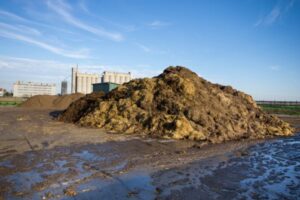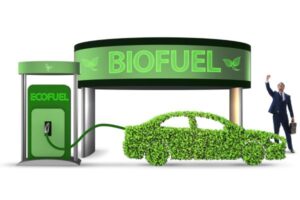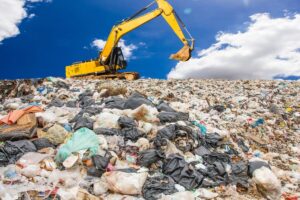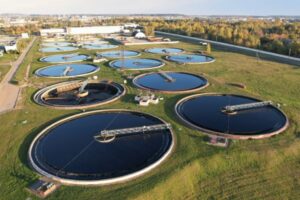Modern agriculture faces a complex set of challenges: managing vast quantities of animal waste, combating rising energy and fertilizer costs, and meeting increasing demands for sustainable farming practices. For many farms, animal manure is viewed as a costly liability, an odorous substance to be disposed of, often leading to environmental risks like nutrient runoff into waterways and the release of potent methane gas. However, a powerful and transformative solution is available today. A combination of Anaerobic Digestion (AD) technology and Hydrothermal Liquefaction (HTL) is changing the game, turning this liability into a dual-purpose asset: a source of renewable energy and a high-value biofertilizer.

The Challenge of Agricultural Waste: Manure’s Impact
Animal manure is a concentrated source of nutrients, but when stored in open lagoons or spread on fields without proper management, it can pose significant environmental threats. The anaerobic decomposition that occurs in these settings releases large volumes of methane (CH₄), a greenhouse gas with a global warming potential far exceeding that of carbon dioxide. Furthermore, nutrient runoff from fields can contribute to algal blooms in local rivers and lakes, damaging ecosystems and contaminating drinking water sources. Addressing these issues often comes with regulatory scrutiny and financial penalties, making traditional manure management a significant burden for farmers.
Anaerobic Digestion: A Controlled, Dual-Purpose Solution
Anaerobic Digestion is a biological process that harnesses the power of microorganisms to break down organic matter in a sealed, oxygen-free environment—a “digester.” By controlling this process, Clean Stream Fuels’ AD technology eliminates the uncontrolled release of methane. More importantly, it produces two extremely valuable byproducts:
- Biogas (Renewable Natural Gas): A methane-rich gas that can be captured and used for energy.
- Digestate: ⦁ Digestate: A nutrient-rich, stable solid and liquid material that usually serves as a premium biofertilizer, however, when used as a feedstock for HTL process it becomes Bio Crude. Bio Crude which is then easily refined to a multitude of sustainable fuels.
This single-system approach addresses both the waste management and resource needs of the farm, turning a problem into a profit center.
Product 1: From Waste Gas to Valuable Energy -The biogas captured in our AD systems can be used directly on the farm for a variety of purposes. It can be converted into electricity to power farm operations, used to heat barns and water, or, in many cases, upgraded to pipeline-quality Renewable Natural Gas (RNG). This RNG, which is chemically identical to fossil natural gas, offers farms a powerful new revenue stream. By selling RNG to the national pipeline, farmers can generate a steady income stream, offsetting operational costs and providing a stable financial foundation. This not only enhances farm profitability but also contributes to the nation’s energy security by displacing fossil fuels.
Product 2: From Waste to Nutrient-Rich Biofertilizer – The second major output of the AD process is digestate. This is far superior to raw manure. The digestion process stabilizes the nutrients, significantly reduces odors, and destroys pathogens, creating a homogenized, easy-to-apply fertilizer. This premium biofertilizer:
- Enhances Soil Health: Digestate improves the soil’s organic content and water retention, leading to healthier, more resilient crops.
- Reduces Fertilizer Costs: By providing a reliable source of high-quality, farm-produced fertilizer, AD technology reduces the need for expensive, energy-intensive synthetic fertilizers.
- Minimizes Environmental Risk: With a more stable nutrient profile, digestate is less prone to runoff, protecting local waterways and helping farms comply with environmental regulations.
This powerful byproduct closes the nutrient loop, creating a truly circular system where waste from the farm’s animals becomes a key input for growing its crops.
Product 3: From Waste to Biocrude using HTL.
The term “hydrothermal” is key to understanding the process. It refers to the use of heated water under high pressure. In an HTL reactor, biomass (organic matter) is exposed to water at subcritical or supercritical conditions—typically temperatures ranging from 250°C to 370°C and pressures of 10 to 25 MPa (100 to 250 atmospheres). Under these specific conditions, water behaves as a powerful solvent and a reactant, capable of breaking down complex organic molecules.
Unlike other biomass conversion methods like pyrolysis, which requires dry feedstock and operates at much higher temperatures, HTL is designed for wet waste. This is its central advantage. The high pressure keeps the water in a liquid or near-liquid state, preventing it from turning to steam. In this state, the water’s unique properties facilitate the rapid decomposition of biomass into smaller, more stable, and energy-dense hydrocarbon molecules. Essentially, HTL mimics the geological process of crude oil formation, but accelerates it from millions of years to a matter of minutes or hours.

A Holistic Impact for Sustainable Agriculture
Clean Stream Fuels’ combination of Anaerobic Digestion technology and Hydrothermal liquefaction provides a holistic solution for the agricultural sector. It creates new revenue streams, reduces operating expenses, minimizes environmental impact, and enhances operational sustainability. By transforming manure from a costly burden into a source of renewable energy and a valuable soil amendment, our solutions empower farmers to build a more resilient and profitable future and help the USA achieve its sustainability goals, while cleaning the environment. We are proud to be a partner in building sustainable, energy-independent rural economies across the USA.
Ready to Turn Waste into a Revenue Stream?
To learn more about how Clean Stream Fuels’ advanced Anaerobic Digestion technology can benefit your farm or agricultural business, contact our expert team today to explore your options.
#SustainableAg #AgTech #RNG #AnaerobicDigestion #RuralEnergy #FarmProfitability #Biofertilizer #CleanStreamFuels



